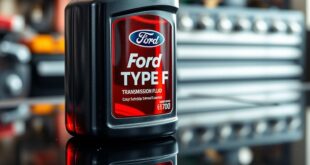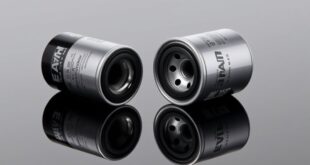If transmission fluid spills on your radiator hose, it can cause swelling and degradation of the rubber. This leads to loss of flexibility, increased wear, and potential leaks. If left unchecked, the damage can worsen, affecting other components and possibly leading to overheating. You should clean up the fluid immediately to prevent serious issues. Want to find out more about the long-term effects and preventive measures to protect your vehicle? There's plenty more information available.
Understanding the Composition of Transmission Fluid
Transmission fluid plays an essential role in your vehicle's performance, acting as both a lubricant and a coolant.
It's made up of a blend of base oils and additives designed to enhance its properties. These additives help protect metal surfaces from corrosion and wear while providing ideal lubrication for moving parts.
The fluid also helps maintain proper operating temperatures, guaranteeing smooth gear shifting. Understanding its composition is critical because any leaks can lead to performance issues.
Effects of Transmission Fluid on Rubber Components
While you may not think about it often, the effects of transmission fluid on rubber components can be significant. When transmission fluid leaks onto rubber parts like hoses or seals, it can cause swelling, softening, or even disintegration. This damage compromises the integrity of these components and can lead to more severe issues down the line.
| Effect | Description | Result |
|---|---|---|
| Swelling | Rubber expands due to fluid | Loss of flexibility |
| Softening | Rubber becomes less durable | Increased wear |
| Disintegration | Breakdown of rubber material | Potential leaks |
Being aware of these effects helps maintain your vehicle's health.
Immediate Actions for Spilled Transmission Fluid
If you notice transmission fluid spilled on your radiator hoses, act quickly to minimize potential damage.
Start by using a rag or paper towel to soak up as much fluid as possible. Don't let it sit, as transmission fluid can harm rubber components.
After absorbing the spill, clean the area thoroughly with soap and water to remove any residue.
If the spill is significant, consider replacing the affected radiator hose to prevent future issues.
Always inspect for any signs of leaks or further damage, and consult a qualified mechanic if you're unsure about the severity of the situation.
Long-Term Consequences of Neglected Spills
Neglecting spills of transmission fluid on radiator hoses can lead to serious long-term consequences for your vehicle.
Over time, the fluid can degrade the rubber, causing it to swell or soften. This deterioration can result in cracks and leaks, compromising the effectiveness of your cooling system.
If the transmission fluid mixes with coolant, it can create sludge that clogs crucial components, leading to overheating and engine damage.
Additionally, prolonged exposure can weaken the radiator hoses, making them more prone to failure.
Regular inspections and prompt cleaning are essential to avoid these costly repairs and maintain your vehicle's performance.
Preventive Measures to Protect Your Vehicle
Maintaining your vehicle's health requires proactive steps to prevent transmission fluid from damaging radiator hoses and other components.
Regularly inspect your hoses for signs of wear or leaks, particularly around the connections. If you notice any fluid stains, address them immediately. Always clean up any spills promptly with soap and water to minimize damage.
Consider using protective coatings designed for rubber to enhance durability. Additionally, schedule routine maintenance checks with a qualified mechanic to catch issues before they escalate.
Staying vigilant about your vehicle's condition will help you avoid costly repairs and guarantee its longevity on the road.
Frequently Asked Questions
How Can I Identify a Transmission Fluid Leak?
To identify a transmission fluid leak, check for reddish-brown fluid under your vehicle, inspect hoses for wetness, and monitor fluid levels regularly. If you notice any signs, have a mechanic evaluate it immediately.
What Signs Indicate Transmission Fluid in the Coolant?
You'll notice a reddish tint in the coolant, a sweet smell, and possible overheating. If you see these signs, it's essential to act quickly, as mixing fluids can cause serious engine damage.
Can I Use Any Cleaner for Transmission Fluid Spills?
You shouldn't just use any cleaner for transmission fluid spills. Opt for a degreaser or soap and water, as these effectively remove the fluid without damaging the surfaces. Always rinse well to guarantee no residue remains.
How Often Should I Inspect My Vehicle for Leaks?
You should inspect your vehicle for leaks at least once a month. Regular checks help catch issues early, ensuring your vehicle runs smoothly and preventing costly repairs. Don't wait until you notice a problem!
What Are the Costs Associated With Repairing Transmission Fluid Leaks?
Repairing transmission fluid leaks can vary widely in cost, depending on the severity and location of the leak. You might spend anywhere from $150 to over $1,000, so getting a quote from a mechanic's essential.
 Car Service Land Coupons for Oil change, Tires, Wheel alignment, Brakes, Maintenance
Car Service Land Coupons for Oil change, Tires, Wheel alignment, Brakes, Maintenance



